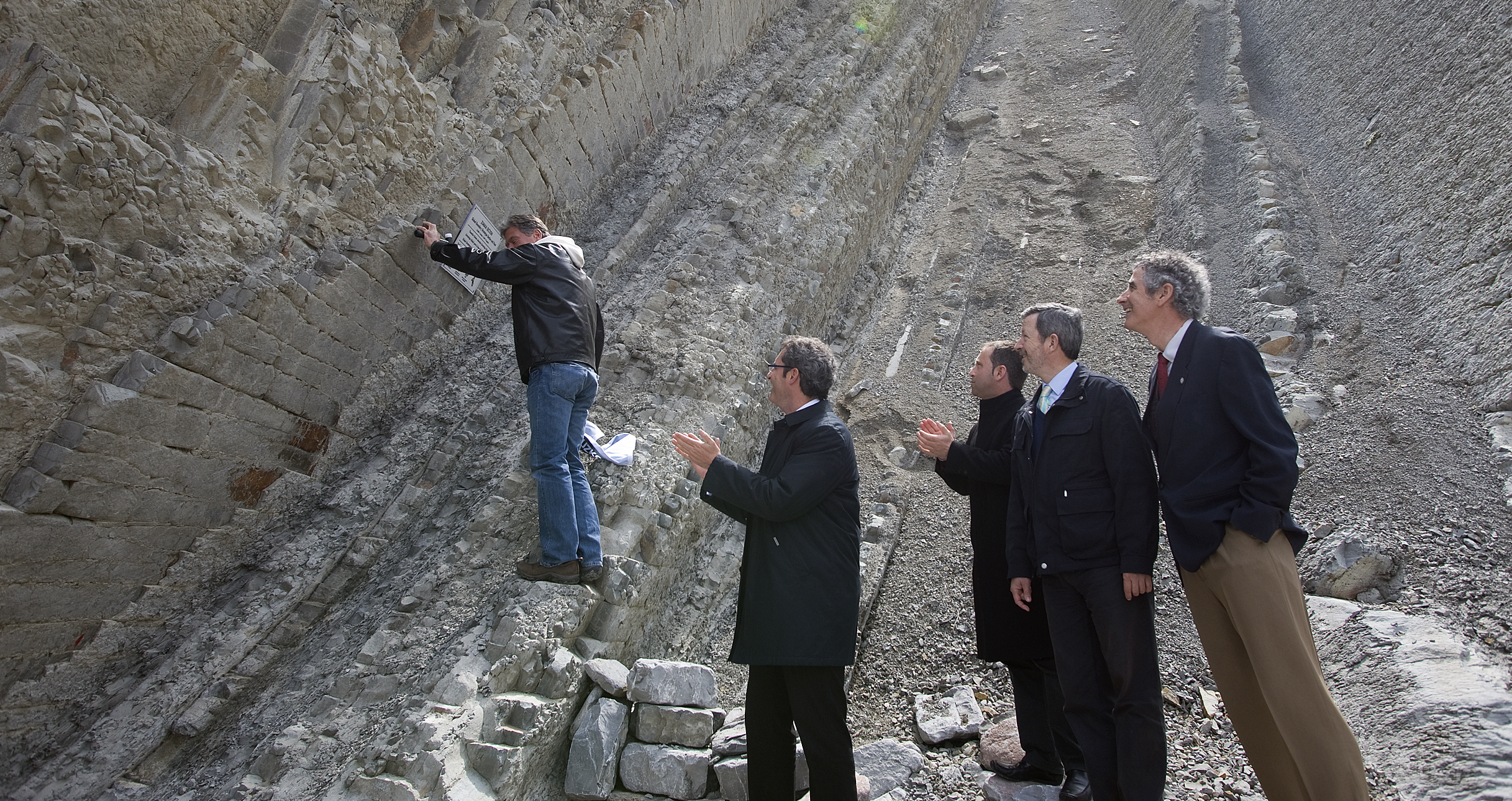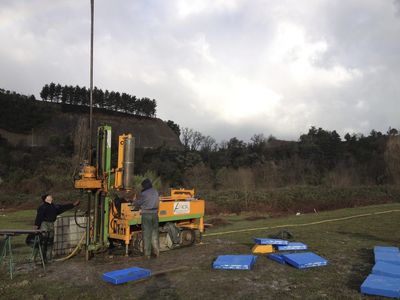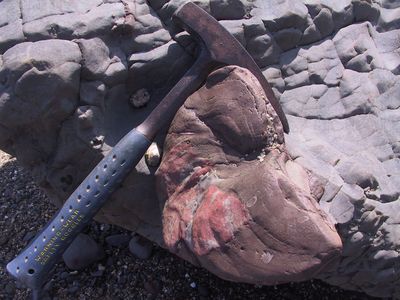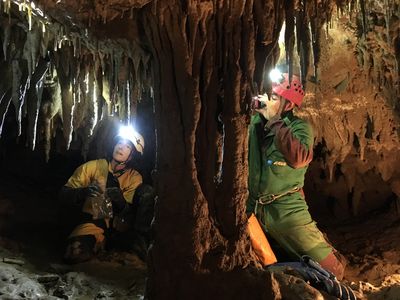Research
Research has always been fundamental for the Geopark. We coordinate our research to open up new avenues, bring together different disciplines, organise events and gather all the knowledge generated about our natural and cultural heritage. Every year, Geoparkea invests in the research projects we consider most interesting for our interpretive work.

Placing golden spikes in Paleocene stratotypes in 2010.

After many years of research, the Geopark’s flysch is now ranked among the world’s top scientific sites. It has resulted in more than one hundred high-impact scientific publications, a significant number of doctoral theses, and hundreds of visits from universities all over the world. In 2008, the International Union of Geological Sciences (IUGS) declared two boundary stratotypes in the geopark — the Palaeocene and the K/Pg boundaries — that are included in the UNESCO–IUGS Geosites programme.
There is also a prolific amount of research into the period of Prehistory, with several digs currently in progress. In recent years there have been major advances in research into the plio-quaternary evolution of the landscape. Scientists have studied the karst landforms, the estuaries, the abrasion platforms and the remodelling of the coastline over the last few thousand years.
Research and sampling permits
The flysch between Deba and Zumaia is a protected biotope and, as such, it is protected under the Basque Country’s nature and conservation laws. Remember that you must obtain the required permit for any research or sampling in this area from the local authorities (Diputación Foral de Gipuzkoa). Download and complete the form, then send it to:flysch@gipuzkoa.eus
- Research Permit Template (Microsoft Word)
Investigate with us
If you want to qualify for a financial grant to carry out a research project in the Geopark, consult the regulatory bases and call for grant to promote scientific research in the Basque Coast Geopark in 2026.
Geoparkea research programme projects
Recommended scientific reading
Many scientific articles have been published since the beginning of the 20th century. Follow the link to our reference section classified by topic.


